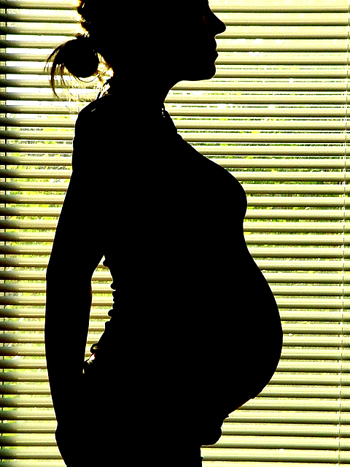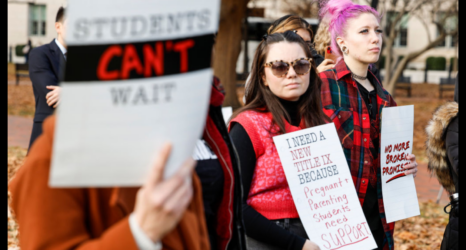The U.S. has the ability to improve maternal well-being and decrease infant mortality rates if it implemented federal paid family leave.

Jane, a new mother from Kentucky, returned to work only two short weeks after her baby was born. She had to return to her job as a waitress because she needed the money. Only three hours into her shift, she felt that her lower T-shirt was wet. Her C-section wound had ruptured, and she was rushed to the hospital. Her only concern: How will I pay my bills?
The U.S. currently has no policy that provides a standard paid maternity leave, forcing many women to go back to work just one to two weeks postpartum. These women are unable to recover sometimes even after major surgery due to fear of job loss and financial instability negatively impacting both their health and the health of their newborns. As a result, some women leave the labor force to have the appropriate time to heal and spend with their newborn—negatively impacting the economy. With the COVID-19 pandemic causing soaring unemployment rates and an economic recession, a federal paid maternity leave policy is even more pertinent.
The inability to recover from childbirth and pressure to return to work has negative health implications for both mother and child. This early return to work results in high job stress and poor sleep—both factors associated with poor maternal well-being, poor mental health, and higher rates of postpartum depression. A link can be made between poor maternal well-being and America’s extremely high infant mortality rate as sudden infant death syndrome (SIDS) and accidents, two major causes of infant mortality, are directly related to poor caregiver well-being.
The U.S. has the ability to improve maternal well-being and decrease infant mortality rates if it implemented a federal paid family leave (PFL) like many other developed countries. PFL has been shown to improve maternal well-being via improved maternal mental health, likely due to decreased stress over financial instability, work and more time for mother and child to bond. It also allows for the establishment of a solid breastfeeding relationship—which is also associated with lower risk of SIDS, allergic diseases, asthma, obesity, type II diabetes and better cognitive development.
Despite these benefits, the current federal policy that can be taken as maternity leave is the family and medical leave act (FMLA). FMLA allots for 12 weeks unpaid and job-protected leave for eligible employees of covered employers.
Criteria such as having worked 1,250 hours within 12 months of being employed means that eligible employees encompass less than 50 percent of Americans. Of that half, the only people that can take leave are those who can afford losing 12 weeks of wages. Considering 78 percent of Americans live paycheck-to-paycheck, only the privileged few have the ability to take unpaid leave.
Paid leave does exist in America: Nine states and the District of Columbia have enacted paid family leave policies that vary in length from four to 12 weeks. These states have covered wages ranging from 50 percent to 67 percent—but this decreased pay rate still may not be enough for some families, leaving many unable to utilize this form of leave.
As it stands currently, minority women, those of low socioeconomic status, immigrants and part-time employees are less likely to take maternity leave. If women do take leave, they are not compensated as well as their white, privately insured, wealthy, more formally educated counterparts. Black, non-college educated, unmarried and Hispanic mothers take one to two weeks of leave while their privileged counterparts take three to five weeks of leave.
Paid family leave would help to bridge that gap, allowing those from these marginalized groups to take four to six weeks of leave—giving mothers time to heal and to form a stronger bond with their child without the stress financial instability brings.
Paid maternity leave likely would cause an increase in women taking leave at any given time, leading some to believe that it could harm the economy with a decreased labor force. The exact opposite has been found: A study in California showed that after the implementation of paid family leave, there was a 10-17 percent increase in work hours one to three years after birth.
PFL also provides women with the time and resources to recover and bond with their child disincentivizing leaving the labor force permanently. Working mothers make up two-thirds of the primary breadwinners and also drive a majority of consumer spending, heavily stimulating the economy and making it extremely important to encourage them to remain employed.
Along with increased profits, PFL has the potential to decrease costs: The improvement in maternal and infant health outcomes PFL is associated with leads to less health care utilization and subsequently less health care costs.
The Biden-Harris administration has the opportunity to decrease infant mortality rates and improve maternal well-being, stabilize the labor force, stimulate the economy and save money with a federally implemented paid family leave. A standardized paid leave would incentivize remaining employed and subsequently returning to work thus stimulating the economy. PFL would allow new mothers from all communities to recuperate, build maternal-infant bonds and improve infant health outcomes—an opportunity that was only available for those that could afford it. With this program, a new mom would not have to decide between leaving her two-week-old baby at home or putting food on the table.
Up next:






